Amenable Scope of eInvoicing in Saudi Arabia
The Kingdom of Saudi Arabia has developed towards achieving digital transformation, and one of the remarkable changes in this transition is eInvoicing. Beginning in December 2021, the Zakat, Tax, and Customs Authority (ZATCA) head has ruled that all taxable entities must take up eInvoicing processes. This action aims to enhance the transparency of the country’s tax administration, increase tax revenues and reduce cases of theft.
For businesses with NetSuite which is one of the most widely used Enterprise Resource Planning (ERP) systems, a need for eInvoicing automation only to comply with the eInvoicing law will not be heeded. We also provide a step-by-step process on how to implement eInvoicing automation in NetSuite so that even in the Kingdom of Saudi Arabia where this legal requirement exists, your business operations may not be affected.
What is eInvoicing?
e-Invoicing is submitting and recording invoices in a digital format determined by the Government that contains certain data. In Saudi Arabia, ZATCA has adopted an incremental approach towards implementing eInvoicing.
Phase 1: Generation and Storage (Effective December 4, 2021)
All businesses are compelled to electronically invoice, and credit and debit notes, and must digitize and save them. No more paper invoices.
Phase 2: Integration (Effective January 01, 2023)
It is required for the companies to integrate their invoicing systems into the ZATCA platform to enable real-time submission and verification of invoices. This includes the processes of validating the invoices as well as incorporating QR codes that operate within the VAT law.
Benefits of Automating eInvoicing with NetSuite
There are numerous advantages and organizational benefits for deployment of eInvoicing in NetSuite, such as:
Compliance Constraints Simplified: Since the systems are flexible, ZATCA’s requirements can be incorporated in NetSuite making it easier for the companies to adhere to the regulations.
Management Resources Saves: A great deal of manual work is avoided due to workflow automation in invoicing thereby hastening the processes of invoice creation, submission, and monitoring.
Fewer Errors: The utilization of real time validation by ZATCA implies that all invoices issued to the customers are correct so there are no chances of incurring fines.
Improved Auditability: With the integrated system of NetSuite, documents are well organized in such that there is easy access to and retrieval from the system during the audit or when resolving a dispute.
Information Safeguard: It is impossible for anyone to manipulate or even lose the transaction data since transactions are done using an electronic invoice.
Key Requirements for eInvoicing in KSA
Before jumping into the implementation, it’s important to map out the essential ZATCA requirements concerning eInvoicing:
Electronic Format: Invoices should also be in formats such as XML or PDF/A-3 with the ease of embedded XML.
Mandatory Fields: Each invoice must contain important information such as the VAT number for the buyer and seller on the invoice, the date of the invoice, amount of VAT and invoice number among others.
QR Codes: It is a legal requirement to add a QR code on the simplified tax invoices, which allows one to store invoice essentials such as the name of the seller, VAT(Tax) Identification number, date and time, and VAT Amount.
Archiving: The invoices are needed to be kept in an electronic format for a period which should not be less than 5 years (though some industries could go to the extreme of keeping these for about 15 years).
Digital Signatures: There would be specific Invoices which might need to be provided with a digital signature.
Get in Touch
We know what NetSuite can do and how it can help you. Schedule your free NetSuite assessment today
Step-by-Step Guide to Implementing Automated eInvoicing in NetSuite
Step 1: Understand NetSuite’s eInvoicing Capabilities
NetSuite offers localization features tailored to meet tax and reporting requirements for specific countries. First of all, make sure that your NetSuite instance is well supported with eInvoicing capabilities for Saudi market compliance. You should consider working with a NetSuite partner or developer to modify the ERP system to comply with ZATCA’s regulations.
Step 2: Assess and Prepare for Compliance
Start with an audit of the invoicing that you currently process in order to establish any level of non-compliance to the expectations of ZATCA. Some of the most critical include:
Making invoices with all necessary fields being filled.
Using QR codes on the simplified tax invoices.
Establishing and maintaining a vault for securing digital copies of archivable documents.
If your current system doesn’t meet these requirements, it’s time to customize NetSuite.
Step 3: Enable eInvoicing Features in NetSuite According to Location
NetSuite also has localization functionality to cater for the tax requirements in different countries. Let’s see how to set up eInvoicing for the Kingdom of Saudi Arabia:
Activate Localization Features: In NetSuite, use the following navigation order: Setup > Company > Enable Features. Look for Taxation, then turn on the Saudi VAT localization feature.
Configure VAT Codes: VAT rates and codes should be prepared in Setup > Accounting > Taxes > Tax Codes, and should comply with Saudi tax rates.
Customize Invoice Templates: Amend your current invoice templates with several required fields; total VAT, unique invoice number and total VAT numbers. This can be done in Customization > Forms > Transaction Forms.
Step 4: Automate QR Code Generation Process
A key requirement of ZATCA is the inclusion of QR codes in all simplified invoices. The following steps will assist in accomplishing this task automatically:
Custom Script: A custom script can be defined for generating the required QR codes to be placed within the invoice that captures customer details relevant to the invoice such as seller name, VAT number, date and total VAT paid. After generation, these codes can be incorporated into the invoice template.
Third-party Integration: Alternatively, you can set up third party application integrations with NetSuite that automatically generate QR codes that meets ZATCA’s requirements, and front images for tax invoices.
Step 5: Real-time Integration with ZATCA
In the second phase of eInvoicing, there are business requirements to connect users’ systems with that of ZATCA for the purposes of reporting and validating in real-time. This is how you coordinate such activity:
API Integration: Engage a NetSuite developer to help create an API link between NetSuite (software) and ZATCA (system). This way NetSuite will facilitate sending the invoices to ZATCA for auditing and verification assistance. A reply from ZATCA to the query will be obtained and can also be recorded in NetSuite.
Digital Signatures: If applicable, make sure the ZATCA bound invoices are digitally signed before dispatching them. With NetSuite, this can be made to happen without administrative work.
Automated Reporting: Arrange that NetSuite will prepare the required reports in any required or acceptable format usually XML and send it to ZATCA automatically. This can be accomplished using NetSuite’s saved or custom searches or using scheduled scripts such as ERS Reports.
Step 6: Testing and Validation
Before the production roll-out, test your NetSuite eInvoicing configuration thoroughly. Aim to test whether all the components are performing their functions as expected:
Generate Test Invoices: Generate at least 3 sample invoices with the relevant information indicating the fields and QR codes to be generated.
Validate API Integration: Verify all API configurations to ensure the documents are sent to ZATCA for validation and auditing in real time.
Audit Logs: Assessing whether there are sufficient audit logs maintained by NetSuite per transaction’s account, ZATCA’s validation responses included.
Step 7: Go Live and Monitor Compliance
After wrapping up testing, you are now ready to go live. However, you still have more compliance work. Continuously supervise your system in order to remain compliant.
Monitor Invoice Errors: Configure ZATCA in NetSuite to alert you whenever an invoice gets rejected by ZATCA.
Stay Updated: Avoid noncompliance by making some updates about ZATCA and ensuring that your installation of NetSuite is up to date.
Audit Regularly: Carry out audit checks on the process of e-invoicing and storage of invoices periodically.
Conclusion
Considering the level of eInvoicing compliance that the country has established, there are opportunities for improving business processes through the adoption of automated eInvoicing in Saudi Arabia within NetSuite. And if properly setup such configurations on NetSuite will enable initiating an eInvoicing process including generating QR codes and ZATCA real-time reporting.
You can expect all challenges related to eInvoicing to quickly become a thing of the past by following the guide and avoiding penalties during the process. Ensure you do everything required to customize the solution offered to fit your exact business requirements, through collaboration with NetSuite professionals to avoid running foul of the tax authorities.
FAQs:
eInvoicing is the process of generating, issuing, and storing invoices in a digital format mandated by the Zakat, Tax, and Customs Authority (ZATCA) in Saudi Arabia. It aims to improve tax transparency, boost revenue, and reduce fraud.
- Phase 1 (December 4, 2021): Electronic generation and storage of invoices, including credit and debit notes.
- Phase 2 (January 1, 2023): Integration with ZATCA’s platform for real-time invoice submission, validation, and the inclusion of QR codes.
NetSuite provides localization features and customization options that help businesses meet ZATCA’s eInvoicing requirements, including automated invoice generation, QR code integration, and real-time reporting to ZATCA.
Automating eInvoicing with NetSuite ensures compliance, reduces manual errors, increases efficiency, improves auditability, and secures data through digital storage and processes.
Mandatory fields include buyer and seller VAT numbers, invoice date, total VAT, invoice value, and a unique invoice number.
QR codes are required on simplified tax invoices and must store essential invoice details like seller information, VAT number, invoice date, and total VAT for easier validation.
QR codes can be generated using custom scripts or third-party integrations that work with NetSuite, ensuring compliance with ZATCA’s eInvoicing standards.
API integration allows NetSuite to connect directly with ZATCA’s platform, enabling real-time submission and validation of invoices, ensuring compliance with the regulations.
In some cases, digital signatures are necessary to ensure the authenticity and integrity of invoices, and NetSuite can automate this process if needed.
Businesses should generate test invoices, validate API integrations with ZATCA, and check audit logs to ensure that all components work as expected before going live.
Businesses must stay informed about any regulatory changes, ensure regular system updates, monitor invoice errors, and conduct periodic audits to maintain compliance.
Businesses must stay informed about any regulatory changes, ensure regular system updates, monitor invoice errors, and conduct periodic audits to maintain compliance.








